
A train ferry is a
ship or
ferry designed to carry
railway
vehicles. The Cargo Deck of a ferry, barge or oceanliner deck is fitted with
railway tracks, and the vessel has a door at the front and/or rear to give access to the
wharve dock landing. In the United States, train ferries are sometimes referred to as "carferries".
The wharf
"slip" has a ramp, and a
linkspan or
"apron", balanced by weights, that connects the railway tracks properly to the ship's deck,
allowing for the water level to rise and fall with the tides.
Train carferries can be quickly loaded and unloaded, providing feasible use of waterway corridors.
The roll-on/roll-off, capacity allows many rail vehicles to be loaded or unloaded at once
Autorack.
A train carferry that is a
barge is called a
car float or rail barge.
SHIP CLASSIFICATION AND VARIATIONS
ROPAX:
Roll-On/Roll-Off Passenger Ship describes a RORO vessel built for freight vehicle transport along with passenger accommodation. Technically this encompasses all ferries with both a roll-on/roll-off car deck and passenger-carrying capacities, but in practice, ships with facilities for more than 500 passengers are often referred to as cruiseferries.
ConRO:
A hybrid of a RORO combined with a container ship. This type of vessel has a below-deck area used for vehicle storage while stacking containerized freight on the top decks. ConRo ships, such as those in the fleet of Atlantic Container Line, can carry a combination of 1,900 twenty-foot equivalent units (TEU) of containers, up to 1,000 TEU of heavy equipment, project and oversized cargo on three decks, and up to 2,000 automobiles on five decks. Separate internal ramp systems within the vessel segregate automobiles from other vehicles, Mafi trailers, and break-bulk cargo.
RoLo:
A hybrid vessel type, with ramps serving vehicle decks but with other cargo decks only accessible when the tides change or by the use of a crane.
LMSR:
Large, Medium-Speed Roll-on/Roll-off (LMSR) refers to several classes of Military Sealift Command (MSC) roll-on/roll-off type cargo ships. Some are purpose-built to carry military cargo, while others are converted.
In today's economic growth enviroment, many global government transportation planning are using the
modal share
intends to convert transportation by
lorries/trucks into "by railways" and carferries to push the
"modal shift" project in order to
"prevent/reduce global warming".
|

IN SERVICE

IN SERVICE

IN SERVICE

Balashi Ghat to Bahadurabad Ghat
Crossing the Brahmaputra River in Bangladesh - superseded by
Jamuna
Bridge, 2003; dual gauge
IN SERVICE

Train ferry service from Peru.
IN SERVICE

UKFERRY LINES
The
Varna,
Bulgaria -
Ilyichevsk,
Ukraine
Service was extended in 2013, to include lines to:
Poti,
Georgia
Batumi,
Georgia
Derince
Turkey
Constantza,
Romania
Novorossiysk,
Russia
.
The carferries
break of gauge takes an average of 30 hours carferries route,with following
ukferry vessels:
Geroi Shipki,
Geroi Plevny,
Geroite na Odessa,
Geroite na Sevastopol,
Greifswald,
Caledonia,
Vilnius Seaway.
IN SERVICE

IN SERVICES

Guangdong Hainan Ferry:
The Yuehai Ferry across
Qiongzhou Strait.
Service between
Zhanjiang,
Guangdong
and
Haikou,
Hainan.
The line has operated since January 2003, carrying both freight and passenger trains, enabling direct train service between the mainland and the cities of
Haikou and
Sanya on Hainan Island.
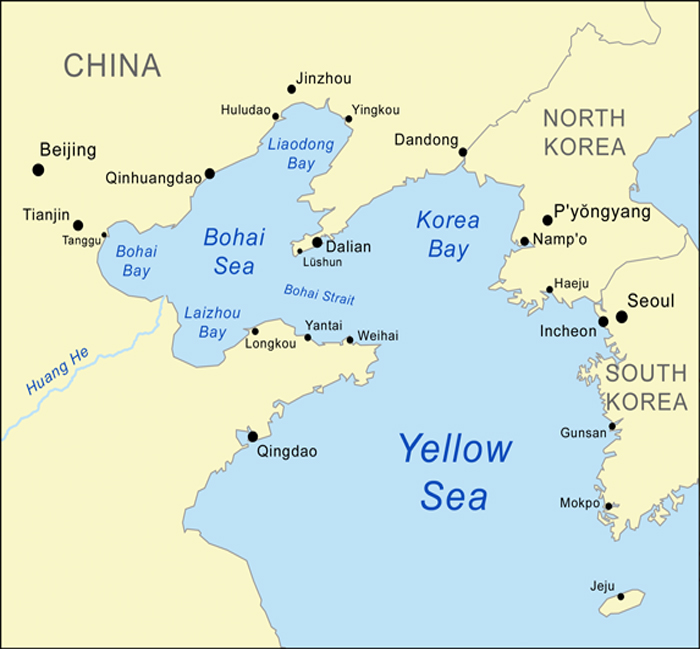
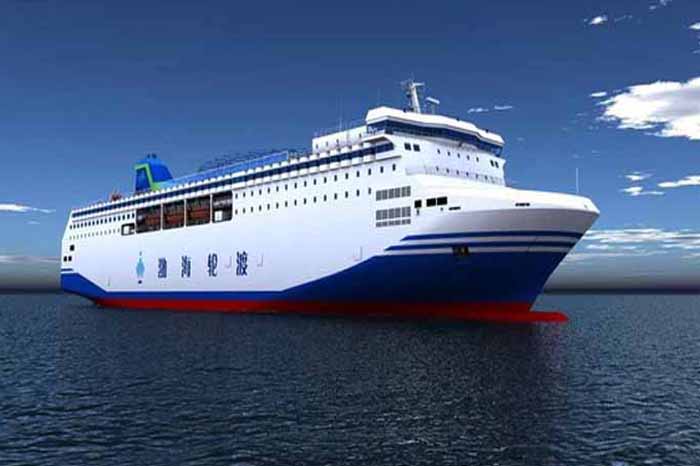
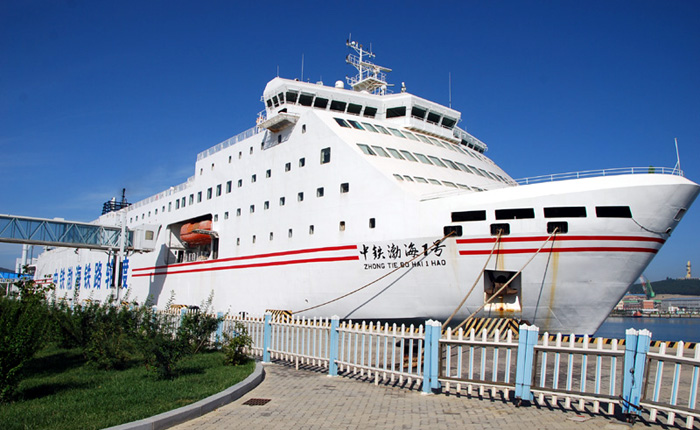
The
Dalian
Bohai Train Ferry
The "Yuehai Railway Yuehaitie #1", was completed in July 26, 2006, and the "China Railway Bohai #1" was delivered before 2007.
The carferry can carry 480 passengers, 50 trains, 50 trucks and 25 cars.
The "Bo Hai Cui Zhu" The World Large Train carferry has been delivered early August and started corssings between Dalian and Yantian on August 8th, 2012.
Tianjin in September 2010, and was going to be delivered to the ferry company in December 2010.
Bohai Train Ferry:
Yantai in
Shandong Province to
Dalian in
Liaoning
Province.
This short-cut line, operated by
Sinorail, has been running since November 2006.
As of 2011, it is freight-only service.
Jiangyin Train Ferry on the
Xinyi Changxing Railway
(freight only).
Trains are carried from Jingjiang on the northern side of the
Yangtze River (terminal at to
Jiangyin on the southern side, ferries make 48 trips per day across the river.
OUT OF SERVICE

Note: all auto and rail ferry services have been suspended between the
United States and Cuba due to the ongoing
United States embargo against Cuba.
PENDING RECOMMISION OF SERVICES
IN SERVICE

OUT OF SERVICE

IN SERVICE

Mukran -
KlaipÄ—da,
Lithuania
Break-of-gauge, broad gauge on board, freight only (1986-)
Mukran -
Ventspils,
Latvia -
Saint Petersburg,
Russia
Break-of-gauge, broad gauge on board, freight only (2007-)
Mukran -
Ust-Luga,
Russia
Break-of-gauge, broad gauge on board, freight only since 2012-Present.
Puttgarden -
Rødby,
Denmark
Passenger trains only Since 1963-Present.
Not used by night and freight trains since 1997, service over the
Great Belt Bridgeinstead).
To be replaced by
Fehmarn Belt Fixed Link in 2021.
Rostock -
Trelleborg,
Sweden
Freight only (1994-Present)
Mukran -
Trelleborg,
Sweden
Changed in 1998 from the old
Sassnitz port to the new port nearby at
Mukran
Freight plus one daily passenger night-train. (1909-Present)
IN SERVICE

IN SERVICE

Calabria-
Sicily
Between the ports of
Villa San Giovanni
In the Region of Calabria and
Messina in the Region of Sicily, provide both passenger and freight service.
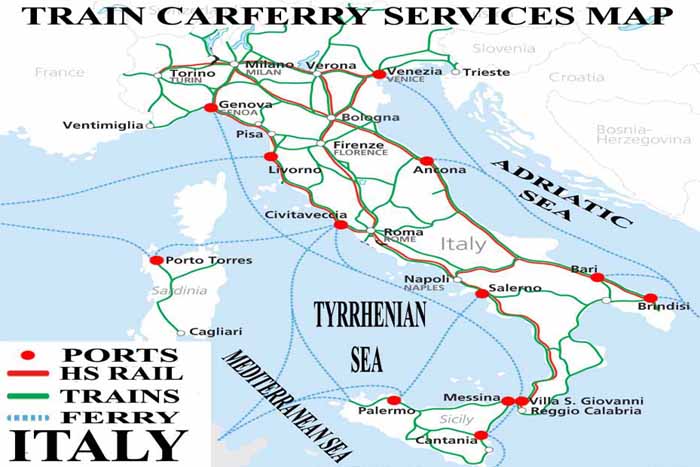
Both "Sicily and Sardinia" services are operated by Bluvia:
Rete Ferroviaria Italiana
The rail Connection between "Mainland and Messina" has a regular and
frequent service, while the connection between "Mainland and Sardinia" is less frequent
traffic.
IN SERVICE

IN SERVICE

IN SERVICE

IN SERVICE

The
Interislander Operaters two train carferries:
Arahura
Interislander Service: December 1983
Built: Denmark 1983
Service History: Interislander
Flag: New Zealand
Port of Registry: Wellington
Passenger Capacity: 550
Interislander Staff Numbers: 45
Road Vehicles: 125
Trucks: 12
Rail Capacity: 24 wagons/railcars
IN SERVICE

IN SERVICE

BLACK SEA
Port Kavkaz to
Port Krym
(
Ukraine),
across the
Kerch Strait.
Operated from 1953 to 1993, service restored as a carferry 2004.
Varna-
Illichivsk
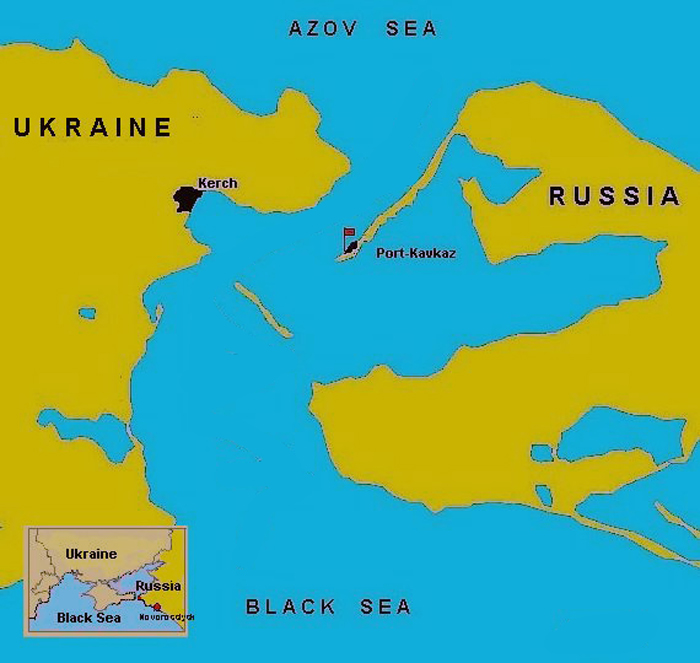
![[]](http://www.atdlines.com/photos/carferry/avangard.jpg)
![[]](http://www.atdlines.com/photos/carferry/kerch.jpg)
PACIFIC OCEAN
Vanino -
Kholmsk
Connecting
Sakhalin Island with the mainland.
Since 1973 the ferry line is operated by the
Sakhalin Shipping Company.
Since Sakhalin railways use the Japanese gauge, the railcars are transported from
the Russian mainland, require
bogies changed; at
Kholmsk.
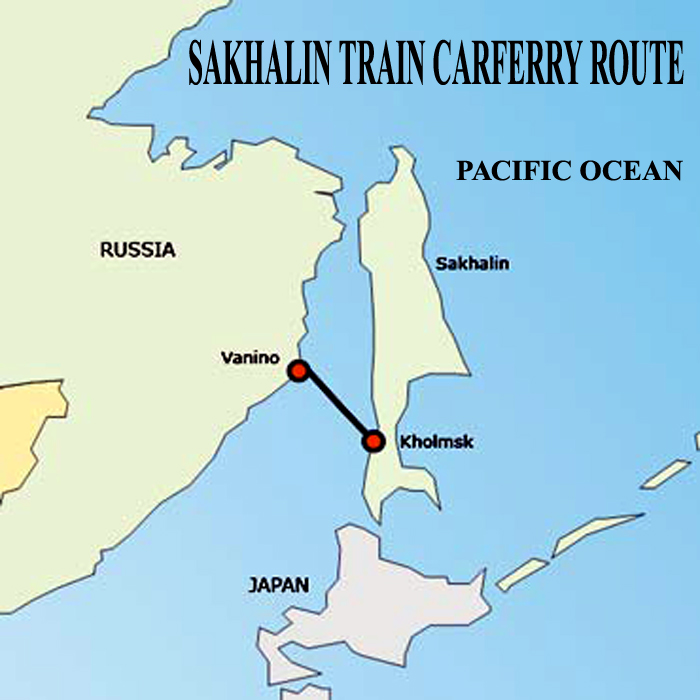
![[ARR]](http://www.atdlines.com/photos/carferry/sakhalin.jpg)
![[ARR]](http://www.atdlines.com/photos/carferry/sakhalin1.jpg) Length: 127.3M
Gross Register Tonnage: 5,025grt
Breadth Moulded: 19.8M
Net Register Tonnage: 1,646nrt
Depth Moulded: 8.8 M
Output: 6 x 2,600ehp
Mean Light Draught: 4.89M
Bunkers Diesel Oil: 158t
Mean Load Draught: 6.20M
Wagon/Rail Capacity: 26
Light displacement: 5,485t
Deadweight: 2,245t
Tons per 1 cm of draught: 17.0
Berths: 24
Seats: 48
Total: 72
Sailing Range: 1,000ml
Wagon Deck Dimensions: 105M
Crew: 41
Speed: 16.5-18kn 19.5M
Length: 127.3M
Gross Register Tonnage: 5,025grt
Breadth Moulded: 19.8M
Net Register Tonnage: 1,646nrt
Depth Moulded: 8.8 M
Output: 6 x 2,600ehp
Mean Light Draught: 4.89M
Bunkers Diesel Oil: 158t
Mean Load Draught: 6.20M
Wagon/Rail Capacity: 26
Light displacement: 5,485t
Deadweight: 2,245t
Tons per 1 cm of draught: 17.0
Berths: 24
Seats: 48
Total: 72
Sailing Range: 1,000ml
Wagon Deck Dimensions: 105M
Crew: 41
Speed: 16.5-18kn 19.5M
IN SERVICE

IN SERVICE

Bosphorus:
Train ferry connects the
European railway network with main connections from
Thessaloniki,
Greece and
Bucharest,
Romania
Terminating at the
Sirkeci Terminal to the
Asian network.
Terminating at the
HaydarpaĹźa Terminal.
This train carferry is for freight only. Passengers use passenger ferries.
The
MarmarayRail Tunnel Project, to be complete in 2015, will replace the ferry connection.
Black Sea:
Ilyichevsk,
Ukraine to
Derince,
Turkey bypasses a
break of gauge
Black Sea:-
Samsun,
Turkey to
Kavkaz,
Russia: Launched in December
2010
Lake Van - Tatvan Van.
The Istanbul-Tehran and Damascus
Tehran passenger trains operate from each terminus to the ferry ports.Only
the luggage van takes the ferry, the passengers have to change at both ends.
The Lake Van ferry is part of the planned
Trans-Asian Railway, Istanbul-Singapore.
A scheduled freight train runs from Istanbul to Kazakhstan.
The train ferry was established to avoid an expensive railroad line along the mountainous southern shore and may be replaced when
traffic increases sufficiently; there are reports of financing discussions between the governments of Turkey and Iran.
The ferry route is 96km long while a rail alternative on the north side would be 250km long in mountainous terrain.
There are two ferries each of 16 coach capacity capable of making three trips per day.
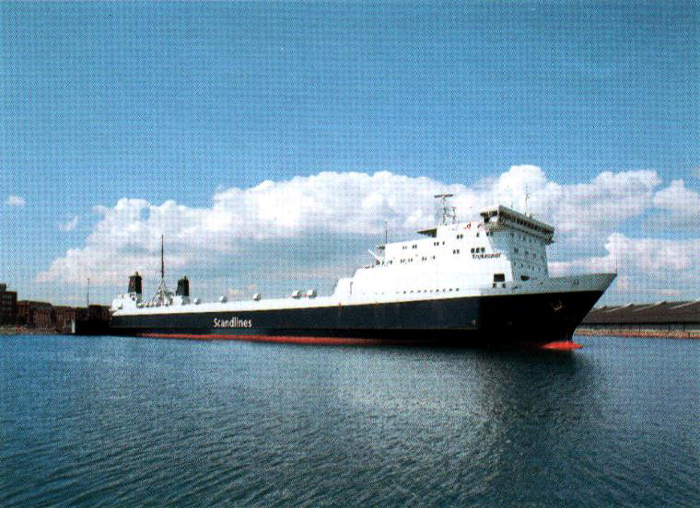
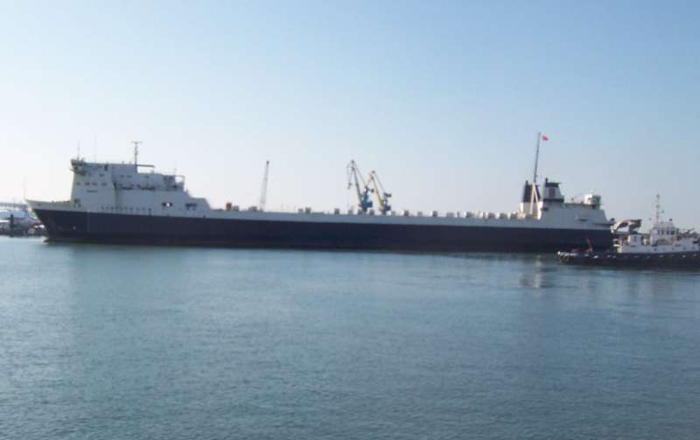 M/F Erdeniz is a train carferry that carries railcars between
Eregli and
Zonguldak ports.
The vessel operates every day except Sunday.
The vessel is operated by
Alyans .
M/F Erdeniz is a train carferry that carries railcars between
Eregli and
Zonguldak ports.
The vessel operates every day except Sunday.
The vessel is operated by
Alyans .
Carferry M/F Erdeniz approaching Van harbour.
Route: Turkeys Alyans Chartering & Shipping
IMO: 7727334
Building Year: 1979-1986
Building Yard: Ankerlřkken Verft, Florř, Norway (#110)
Owner: Turkeys Alyans Chartering & Shipping
Operator: Turkeys Alyans Chartering & Shipping
Length: 162,0 m / 198,51 m
Breadth: 20,2 m / 22,35 m
Draft: 4,5 m / 7,03 m
GT: 15.195
Machinery: 2 Lindholmen/SEMT Pielstick PC2
Speed: 19 (Max) kn.
Number of Passengers: 12
Number of Beds: 12
Number of Railcars:
Lanemetres:
Number of Railway Tracks: 5
Length of Railway Tracks: 806m
Port of Registry:
Flag: Turkey
Former Names:
Trekroner (1998-2004-Scandlines GmbH)
Trekroner (1997-1998-Scandlines A/S DK)
Trekroner (1986-1997-DanLink)
Scandia Wasa (1983-1986)
Milora (1979-1983)
IN SERVICE

Train Carferry on
Lake Victoria
Uganda Railway:
Port Bell to
Tanzania at
Mwanza.
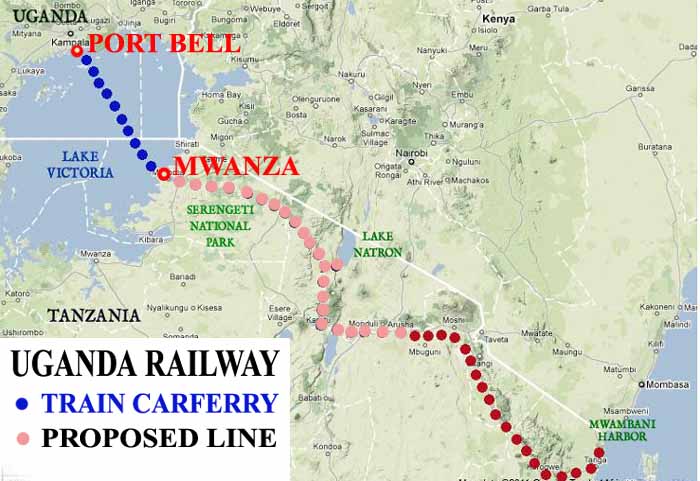
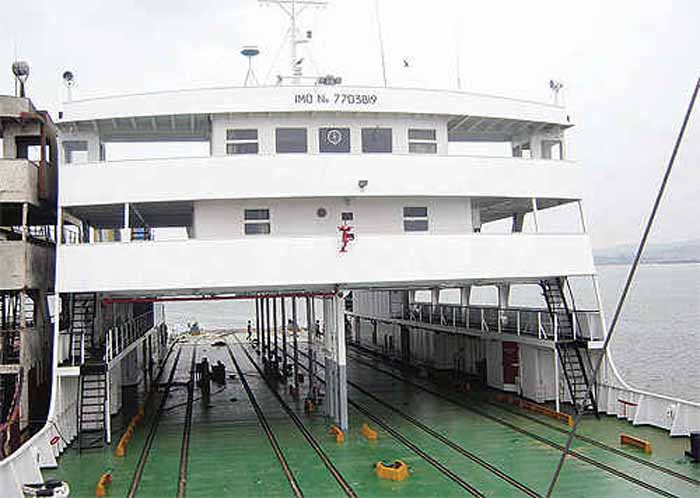
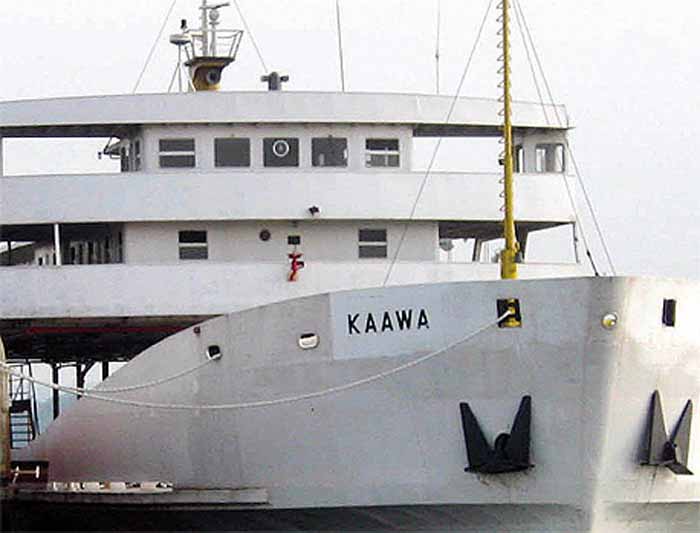
Lake Victoria Ferries:
MV Kabalega,
MV Kaawa,
MV Pemba.
However, in the early hours of 8 May 2005 Kabalega and Kaawa collided[4] almost head-on. Kaawa damaged her bow and Kabalega suffered damage to her bow and flooding in two of her buoyancy tanks. Kaawa managed to return to port but a few hours after the collision Kabalega sank about 8 nautical miles (15 km) southeast of the Ssese Islands.
After the collision Pamba was suspended from service and no Ugandan ferries now remain in operation.
In May 2008 the Daily Monitor stated that it expected the Ugandan government to announce in that year's budget speech a government allocation of 14 billion Ugandan Shillings to buy a new train ferry to replace Kabalega. However, in September 2009 Uganda Radio Network said the Ugandan government was unlikely to replace Kabalega soon. Instead, the Minister of Works proposed to improve port facilities at Jinja and Port Bell and let private operators run railway car floats with greater capacity than the ferries. The minister stated that Kaawa and Pemba would be reconditioned and returned to service and that private businesses had expressed an interest in raising Kabalega and restoring her to use as a private concession.
In October 2009 the Ugandan government reiterated that it would recondition the Pamba and Kaawa and return them to service in 2010 and 2011 respectively.
IN SERVICE

New York New Jersey Rail, LLC
(replaced:
New York Cross Harbor Railroad), transferring freight cars between:
Jersey City, New Jersey and
Brooklyn, New York.
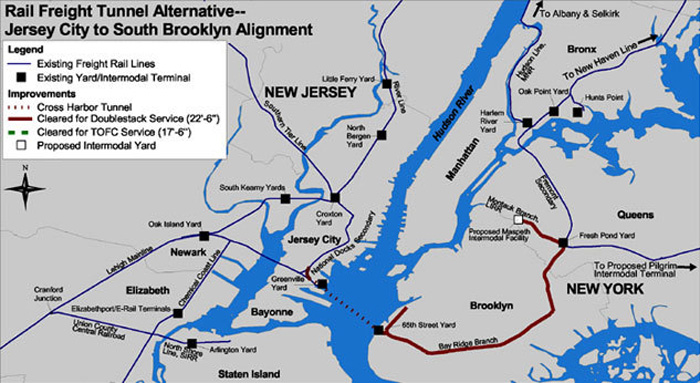
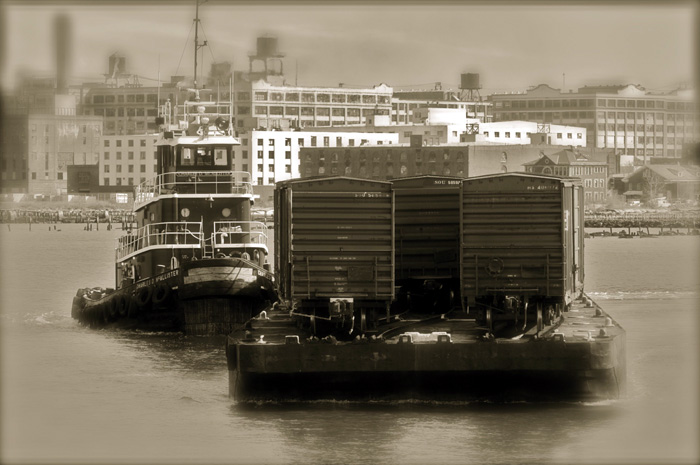
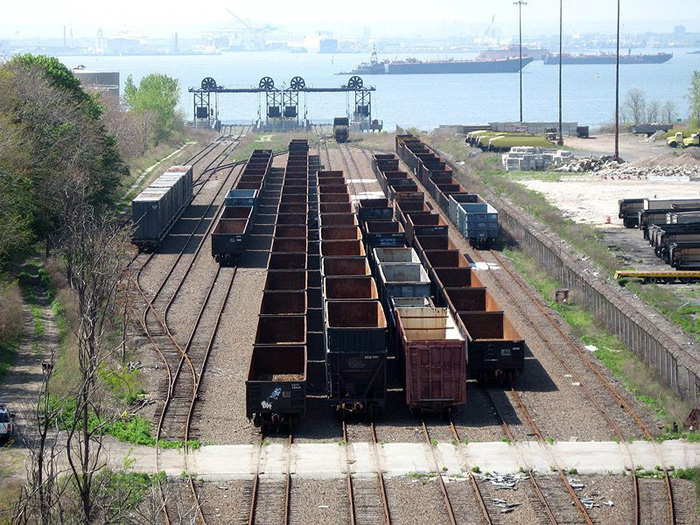
This
car float
still operates because rail cars with flammable and hazardous materials are not permitted in
the former
Pennsylvania Railroad, now
Amtrak,
tunnels under the
East River,
Manhattan and the
Hudson River, and because the
tunnel clearances of
the
tunnels are inadequate for most
freight cars.
Alaska Railroad
Operates "Alaska Marine Line" rail and container barge service.
Alaska Railroad runs rail-barge Services from:
Whittier
Alaska to
Seattle
Washington,
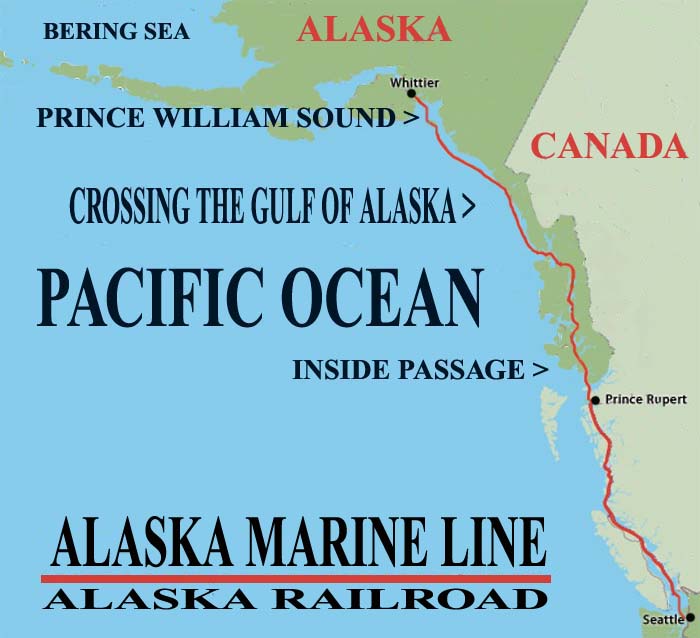
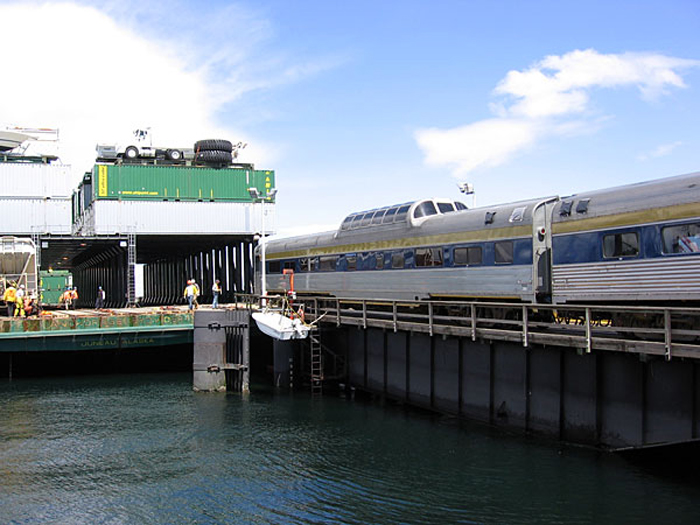
 Canadian National Railway
Operates its AquaTrain between:
Whittier, Alaska and
Prince Rupert,
British Columbia.
Canadian National Railway
Operates its AquaTrain between:
Whittier, Alaska and
Prince Rupert,
British Columbia.
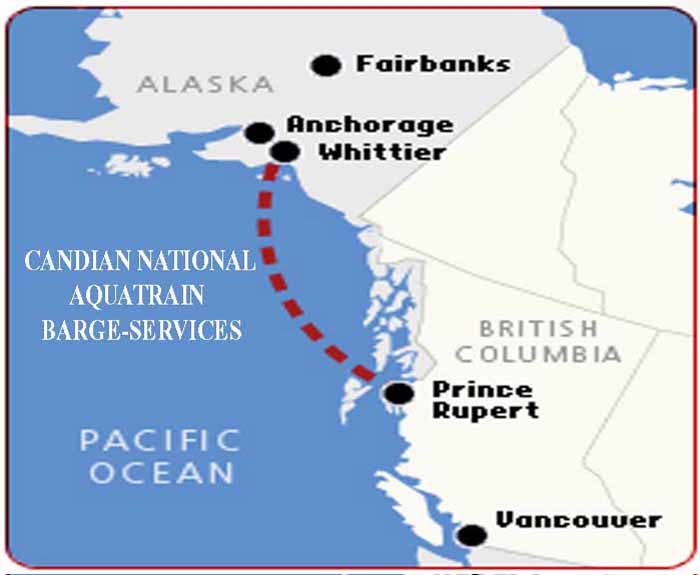
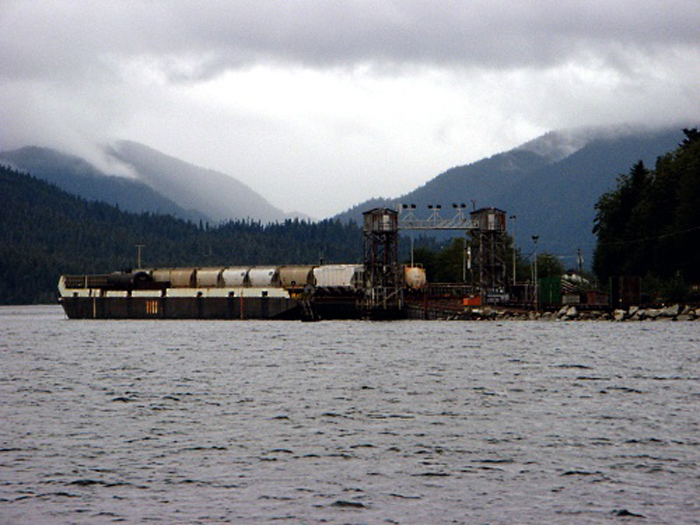
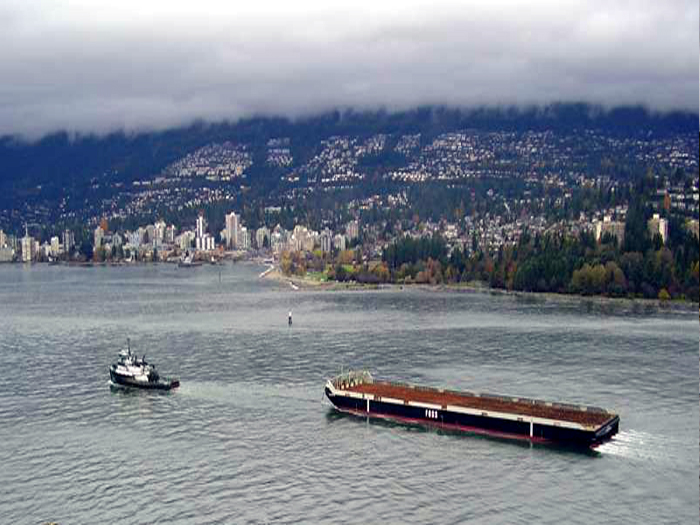 Central Gulf Railroad
Provide "Rail-Ship Services" between:
Port of Mobile and
Coatzacoalcos,
Veracruz,
Mexico.
Central Gulf Railroad
Provide "Rail-Ship Services" between:
Port of Mobile and
Coatzacoalcos,
Veracruz,
Mexico.
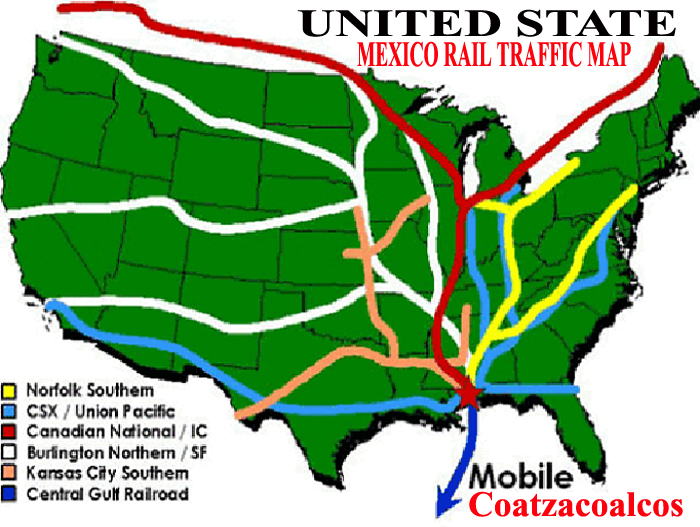
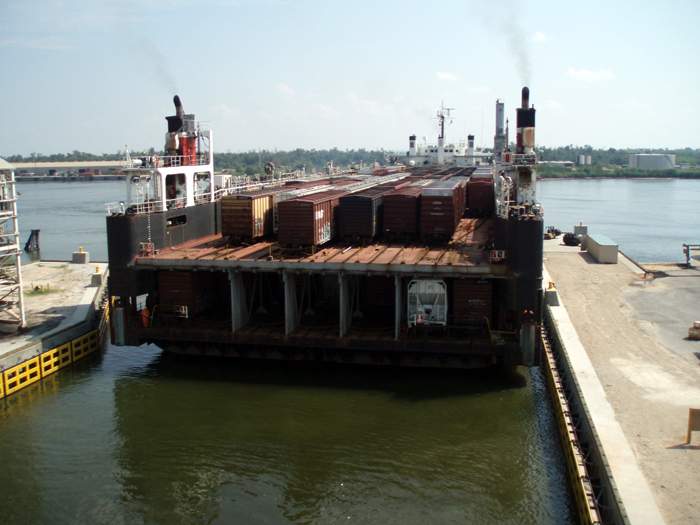
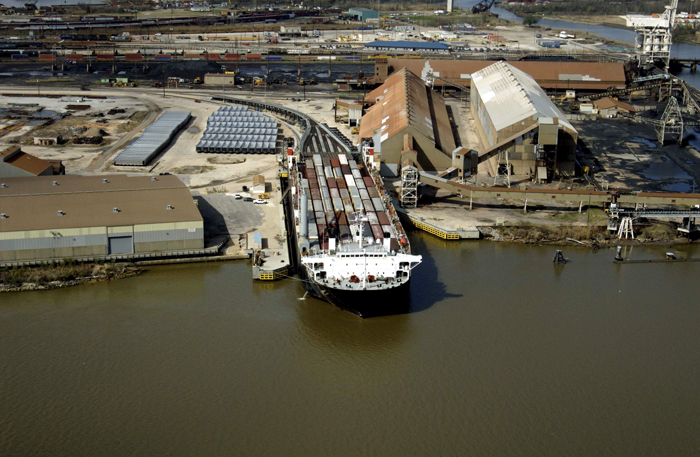
It is served by:
BNSF Railway,
Canadian National Railway,
CSX Transportation,
Kansas City Southern Railway, and the
Norfolk Southern Railway.
Chesapeake Bay -
Bay Coast Railroad from
Norfolk to
Cape Charles, Virginia.
The shortline railroad has two carfloats (25 & 15 cars each) that cross the Chesapeake Bay about twice a week.
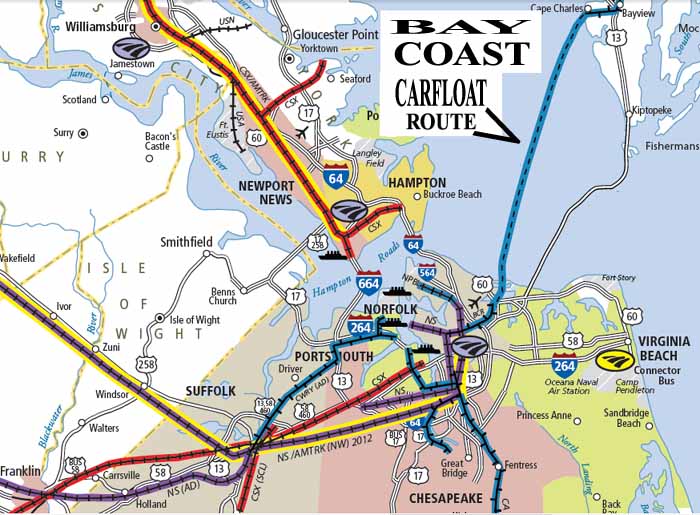
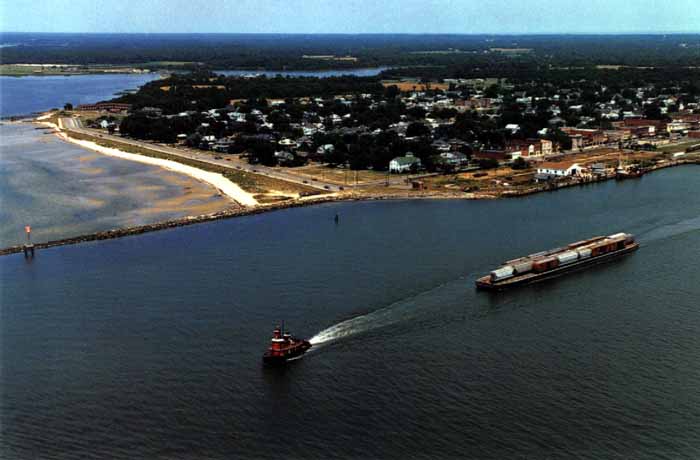
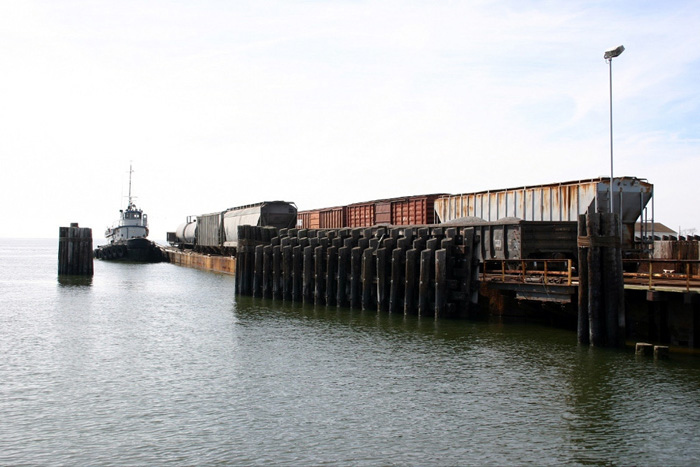
Additional
Bay Coast Railroad Images
Mobile, Alabama to
City Of Ponce
Puerto Rico
Transporation
OUT SERVICE 2010
The Chemex Railroad/Port of Ponce Railroad was a short standard gauge industrial railroad located in the southern city of Ponce and was the last remaining operational freight railroad on the entire island until it ceased operations sometime in 2010.
It first began operations in 1988 under the control of CHEMEX Corporation's predecessor PharmaChem, a supplier of chemicals to Puerto Rico’s pharmaceutical industry, which primarily used the railroad to ship inbound chemical products via a railroad ferry connection from Mobile, Alabama in the U.S. mainland to the marine terminal within the Puerto de Las Américas.
The entire rail system consisted of an:
Eight-track railroad yard,
Railroad ferry terminal,
Two diesel switcher locomotives "EMD SW1 and EMD SW9".
About twice each month from the Port of Mobile, the railroad ferry service transported an average of 24 tank cars throughout each voyage, delivering and receiving both loaded and unloaded cars from the terminal to the rest of the national U.S. rail network.
|


![Crossing Gate]](http://www.atdlines.com/motion/train6.gif)